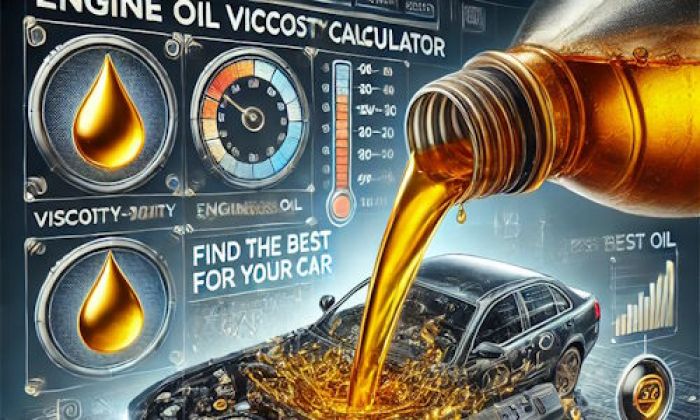Have you ever been stuck in the morning because your Chevrolet truck failed to start? The first thing most people think about in this state is how to get a second vehicle to jumpstart their battery.
No-crank-no-start problem highlights
- Level of urgency:High
- Can you drive?Obviously, no
- DIY inspection:Possible
- DIY repair:Possible but complicated
- Price for repair:$150 - $500
- Common Reasons:Power, starter, wiring, ignition cylinder
- Ways to fix:Check the battery, jump the starter, check wiring and connections

Reasons your Chevy Truck Won't Start, but the Battery Is Good
The following are common reasons your truck fails to start even though the battery is perfectly healthy.
1) Poor Battery Connection
If you have a bad battery connection, your truck will not start. The battery sends energy to your vehicle's electrical system through the cables. If they are loose, these cables obstruct energy flow into the electrical system; hence, the truck will not start.
In addition, if the battery has corroded terminals, it will send insufficient power to start your truck - to check for lousy battery connections in your vehicle, put on your headlights. If they are dim, your connections are faulty.
2) Faulty Starter Motor
Your Silverado has an internal combustion engine with a starter motor that ignites the engine. The starter motor works with a starter solenoid, a small component with a cylinder shape. The solenoid transmits battery energy to the start motor to start the engine.
If one of these two fails, your truck will not start. You will know you have a bad starter motor or solenoid if the interior lights dim when you try to start your vehicle. You will also hear whirring sounds from the engine when you try to start it.
3) Problem with the Ignition Switch
The ignition switch distributes power from the battery to other electrical components of your truck. If this switch faults, there will not be any power distribution, and your vehicle will not start.
Many people miss this problem because they confuse it for a battery and ignition system problem. A bad starter switch will prevent the key from turning in any direction.
4) Your Fuel Tank could be Empty
It is possible that you forgot to refill your gas tank, which is why your truck refuses to start. It would be essential to check this first before moving forward. You may end up opening and repairing the wrong components when you only need to refuel.
Although it takes little fuel to start a truck, your fuel could have dropped to the level where your Chevrolet will not crank. To eliminate this fact, get a can and add some fuel to your tank. If it starts, head to the gas station.
If your fuel gauge shows you have enough fuel, it could be faulty or inaccurate. Poor quality or contaminated fuel could also cause your truck not to start. Gasoline degrades and begins to lose its combustibility properties after six months. If you have parked your truck for a while, you can remove the existing fuel and replace it with a fresh one.
During winter, extreme colds freeze fuel lines inside the tank. You should minimize empty spaces within your gas tank by keeping it full during this time-the emptier the fuel tank, the more room for vapor to form inside it.
5) Faulty Fuel Pump
Another fuel-related reason your truck fails to start is a bad fuel pump. If the fuel pump is faulty and the battery is good, your engine will not receive enough fuel to start the vehicle. A fuel pump pushes fuel from the tank to the engine through fuel lines.
If the fuel pump is in good condition, it produces a soft whirring sound when you turn the ignition switch to "on." If you do not hear this sound, your fuel pump is not doing its job, explaining why your truck is not starting.
6) Burned Fuses
Fuses are essential parts of an electrical system. They protect the wiring network in your truck. If a fuse in the electrical line related to starting your vehicle burns, your vehicle will not start even if the battery is okay.
Burned fuses prevent the power your truck needs to create a spark and ignition from reaching the starter relay. Check out for malfunctioning backlights, interior lights, and accessories such as the stereo. These are signs that you have a bad fuse in your fusible connections.
7) Problem with the Spark Plugs
When you turn the key to ignite your engine, your spark plugs receive high-voltage electric charge through the ignition coil. A distributor regulates the power that flows into the spark plugs. If one of these components, the spark plugs or the distributor, are faulty, your Chevy will not start even if your battery is good and the gas tank is full-bad spark plugs cause the "check engine" light to illuminate.
8) Bad Timing Belt
Timing belts are essential components of any internal combustion engine. It is so vital that its failure can cause significant damage to the engine.
A timing belt rotates the crankshaft and camshaft at the appropriate time inside the engine. It ensures valves open and close at suitable intervals for proper combustion. The timing belt keeps valves from crashing with the pistons inside the engine.
When this critical rubber strip fails, it prevents your truck from starting, as the engine cannot create the proper combustion for ignition. One sign of a bad timing belt is an oil leak around the engine.
What Should I Do When My Chevy Truck Fails To Start yet the Battery Is Good?
If you find yourself with a truck that refuses to start, yet the battery is in perfect health, perform the following tests to determine the problem. You can fix some issues, but others require a professional mechanic.
Assuming you already have a battery tester that helped you conclude that your battery is okay, you will need a decent multimeter to test the wiring, the alternator, and other possible causes of your problem.
- The Cables
Several factors can interfere with the wiring network in your truck. Rust and corrosion can heat your wires and render them useless. Use a voltage drop test to check the battery cables.
Using the multimeter, test the battery to confirm whether it is good at 12 volts. To test for voltage drop on your cables and terminals, press one probe of your multimeter against the battery post and the other against the terminal.
If your cables are healthy, your reading should be zero or near zero. If the reading goes below zero in negative decimals, for instance, -0.07, your lines are losing voltage.
- The Serpentine Belt
If the battery cables are okay, the serpentine belt is next to check. Your truck uses a serpentine belt with idler pulleys to maintain tension. If this belt begins to squeak or shows signs of slippage, it is time to replace it. A loose serpentine belt might not allow your alternator to function correctly.
A serpentine belt for Chevrolet Silverado 1500 costs less than $50 to replace.
- The Alternator
When the alternator goes bad, your dashboard will display a warning. The "Charge" warning means your alternator is not running at 14.3 volts. However, can you always trust your dashboard? Your ECM can fault. The alternator could be the reason you are stuck at home.
To test the alternator, attach your multimeter probes to the battery terminals, and fire up the engine. The reading should be between 14.2 and 14.7 volts. Below 14.2 volts shows that the battery is not charging correctly, while above 14.7 volts means your battery is overcharging.
If it is undercharging, your truck may not start. If the battery is overcharging, your vehicle will start okay, but the charge will soon cook the life out of your battery. A faulty alternator also affects the drivability of your truck as it limits the power going to the spark plugs.
The other tests you should run might require you to involve a professional. For instance, if you suspect the starter to be the cause of your problems, you must remove it to test it. If it turns out to be the issue, you will probably replace it.
The good news is that by this time, you can give your mechanic enough information to save time and money.
Conclusion
No problem is good, but some issues can be frustrating. When you start your truck in the morning, and it fails, in your mind, you always have a solution - get someone to jumpstart your battery.
The frustration kicks in when you realize your problem is not with the battery but some mysterious malfunction within your truck. We hope this article helped reduce the disappointment and gave you the hope of getting back on the road sooner than expected.
Engaging a professional mechanic whenever you encounter a complex problem is advisable.
About the authors
The CarAraC research team is composed of seasoned auto mechanics and automotive industry professionals, including individuals with advanced degrees and certifications in their field. Our team members boast prestigious credentials, reflecting their extensive knowledge and skills. These qualifications include: IMI: Institute of the Motor Industry, ASE-Certified Master Automobile Technicians; Coventry University, Graduate of MA in Automotive Journalism; Politecnico di Torino, Italy, MS Automotive Engineering; Ss. Cyril and Methodius University in Skopje, Mechanical University in Skopje; TOC Automotive College; DHA Suffa University, Department of Mechanical Engineering






Add comment